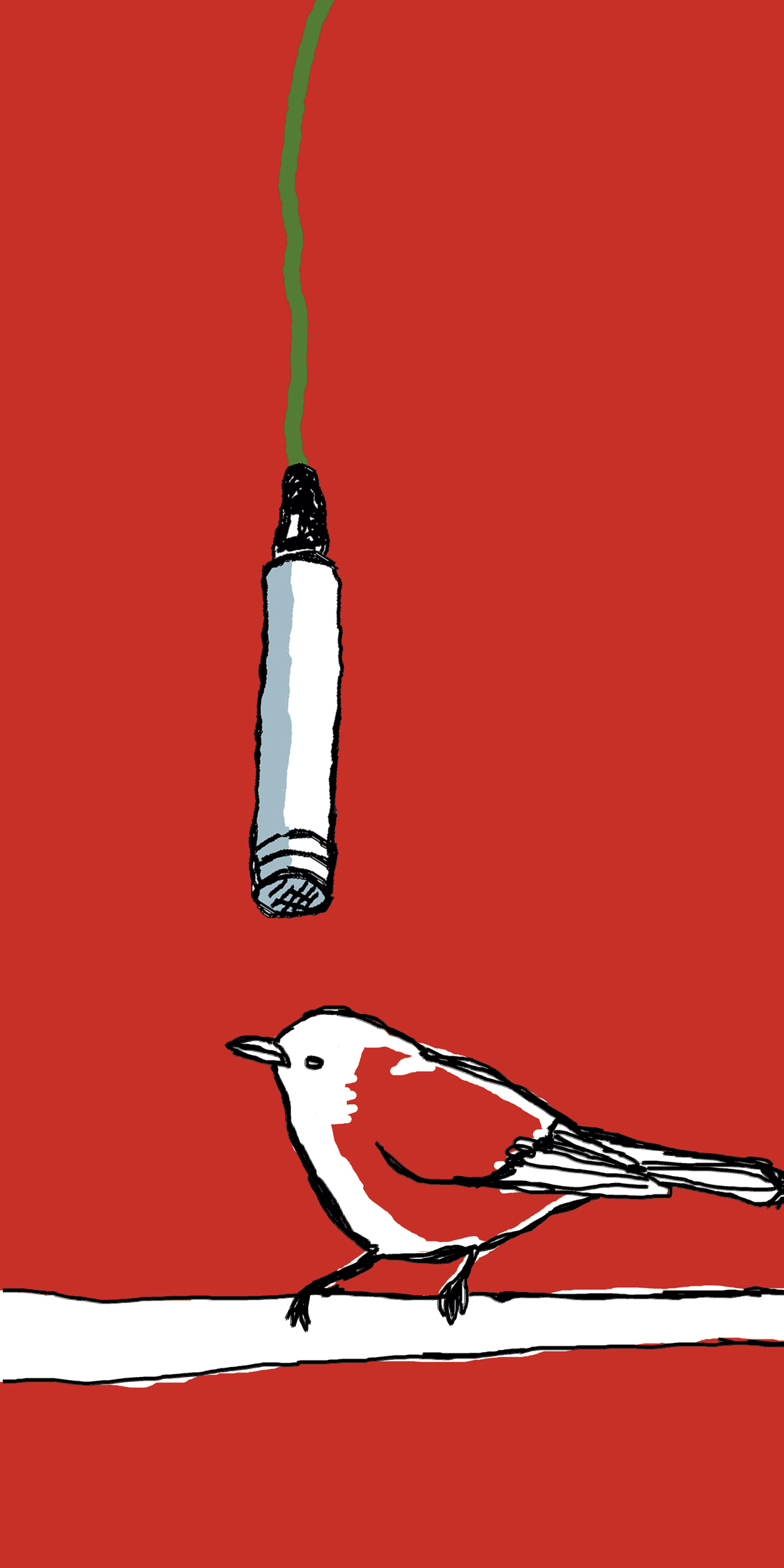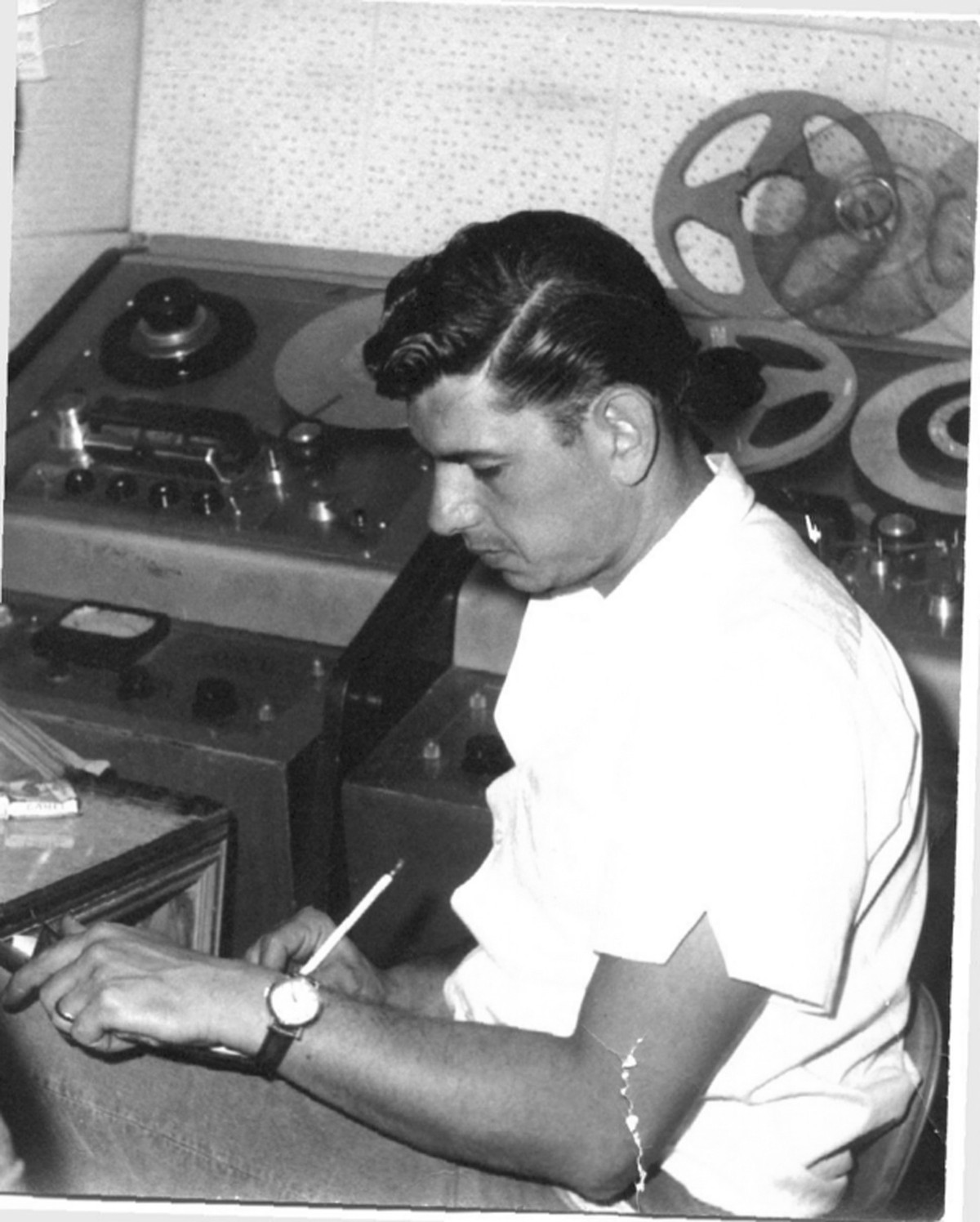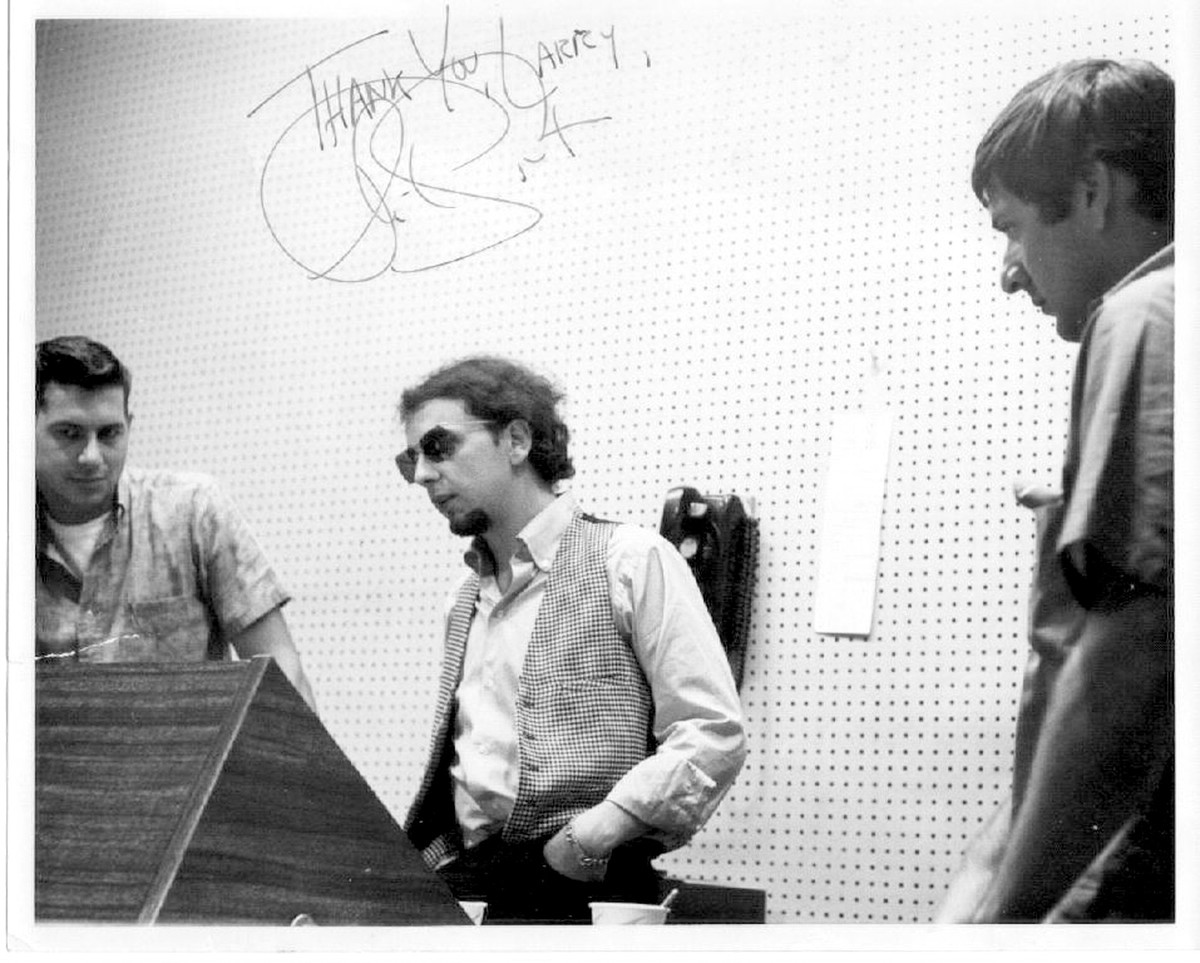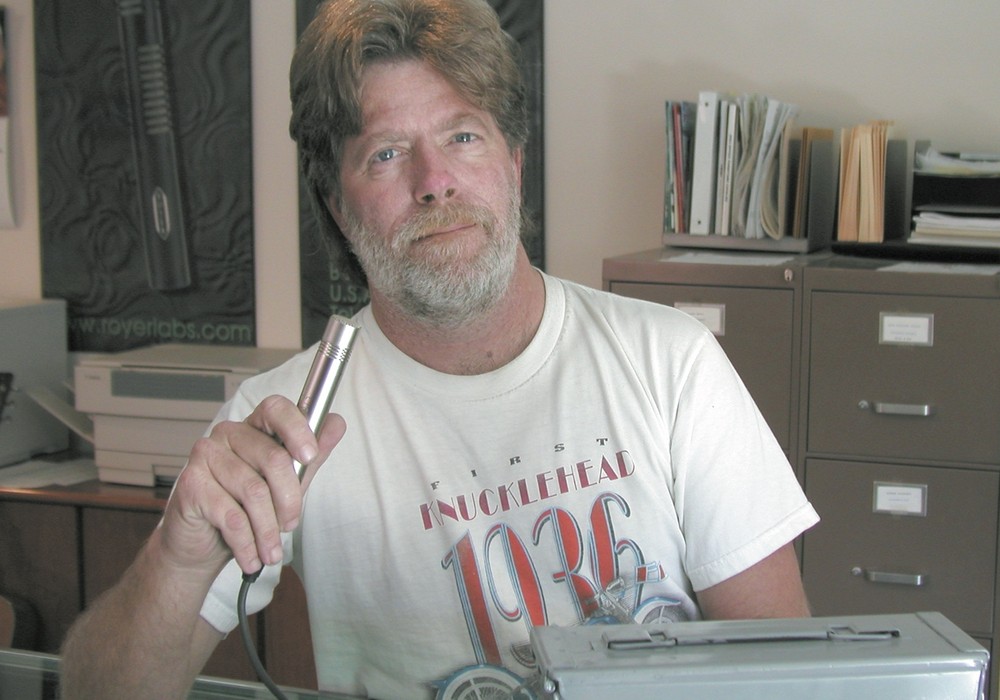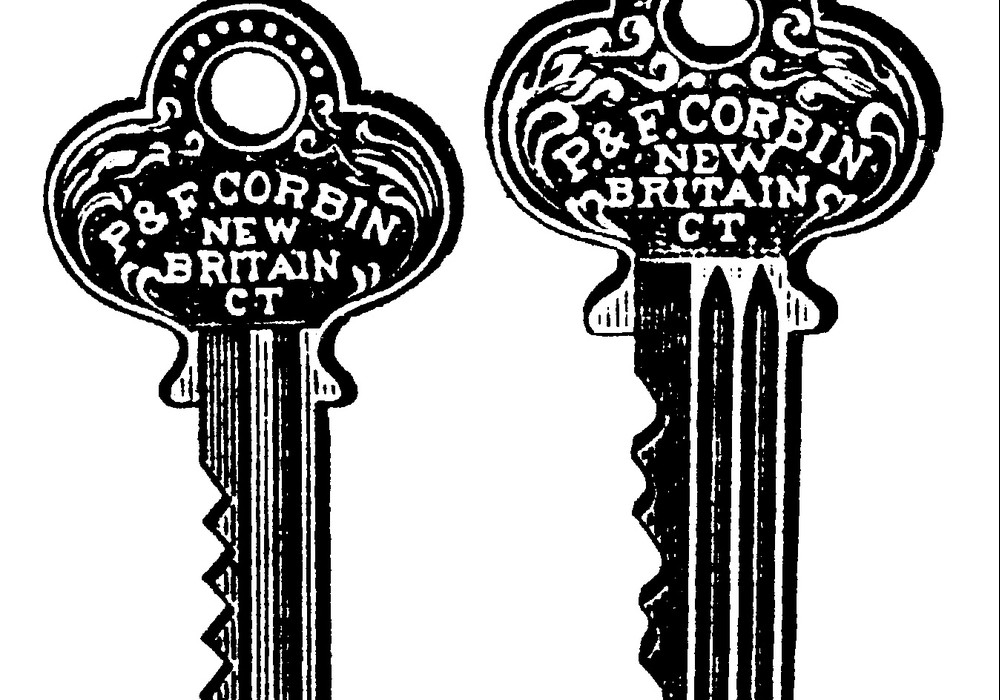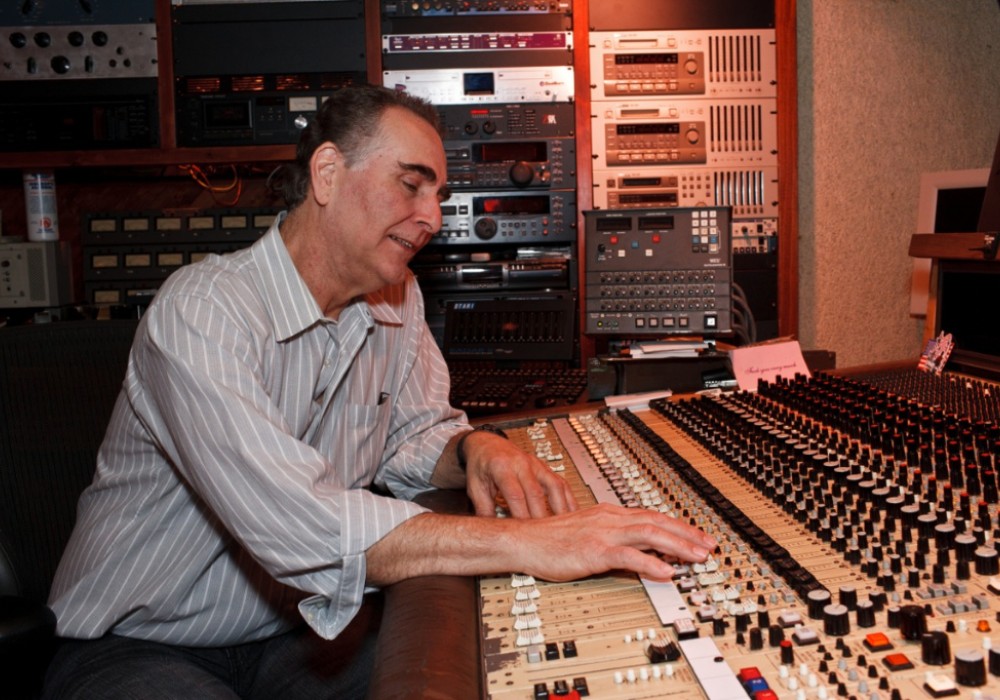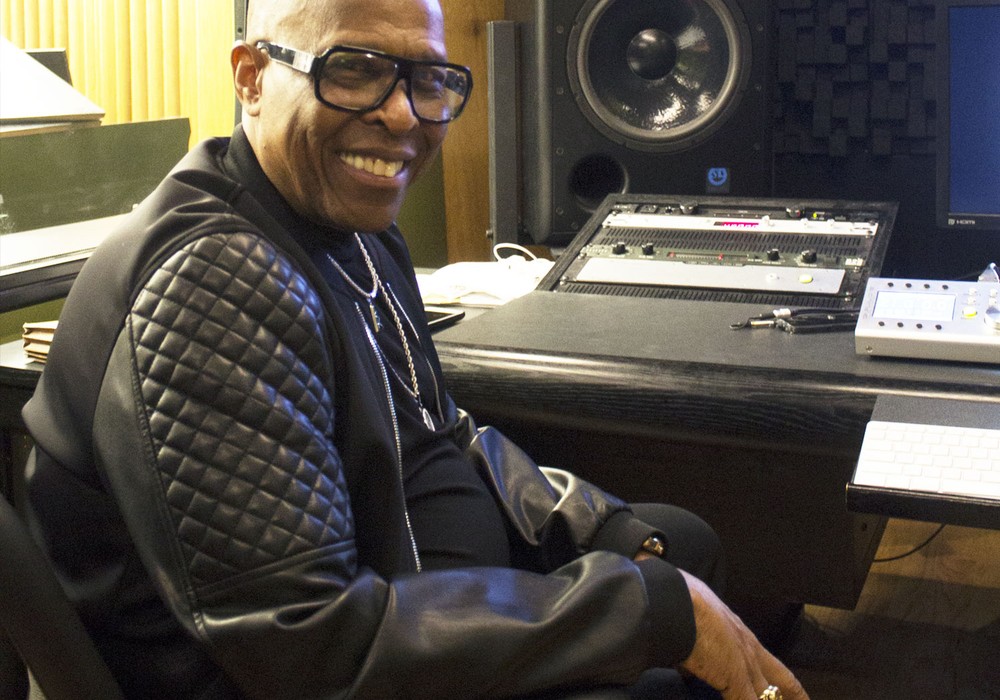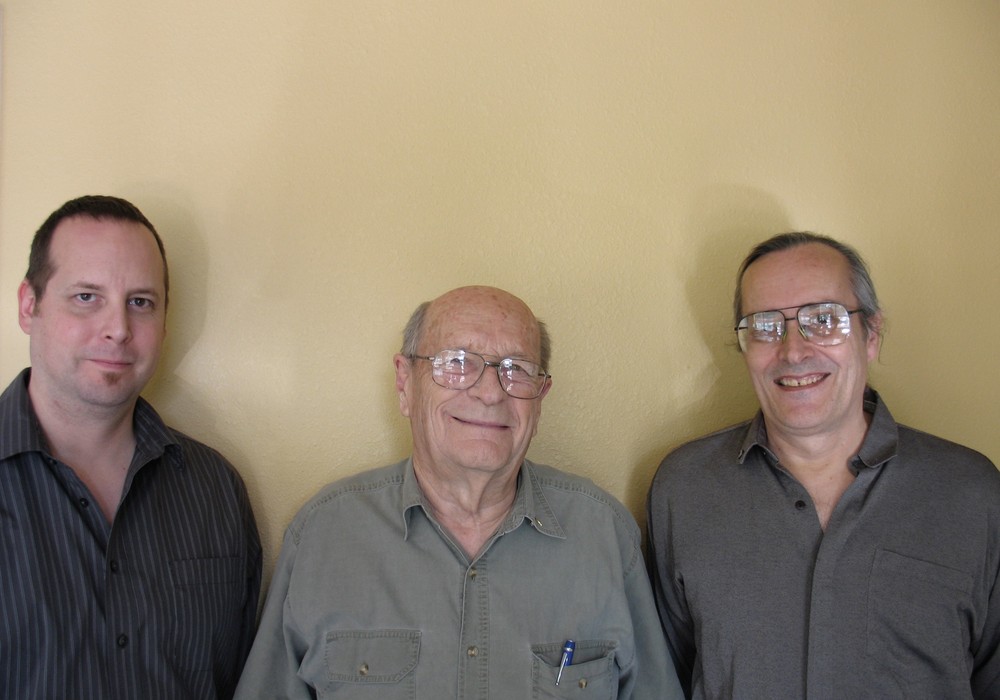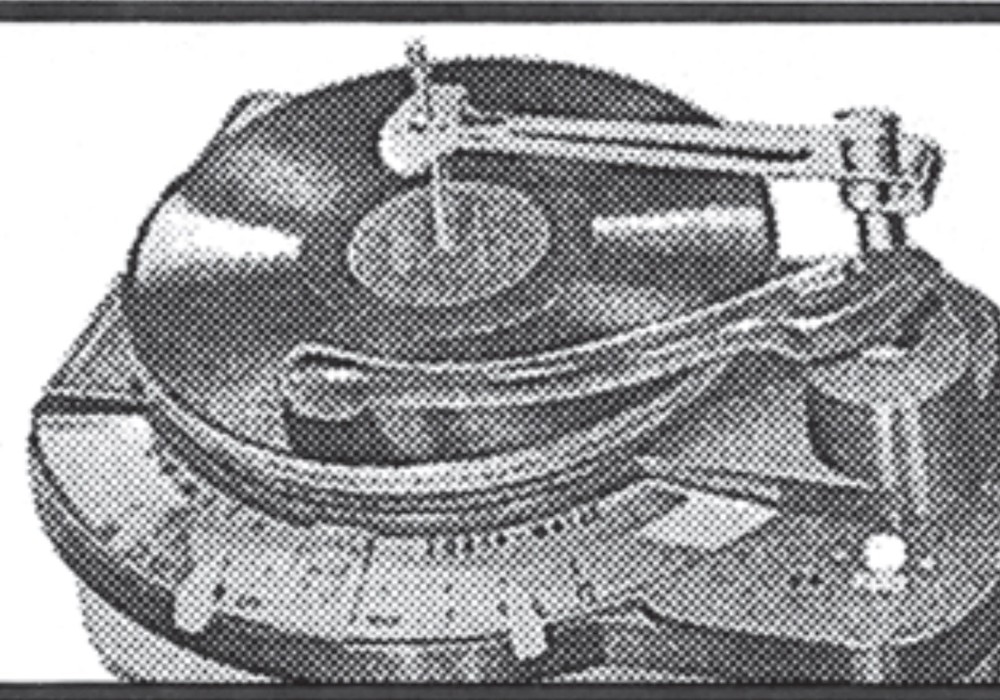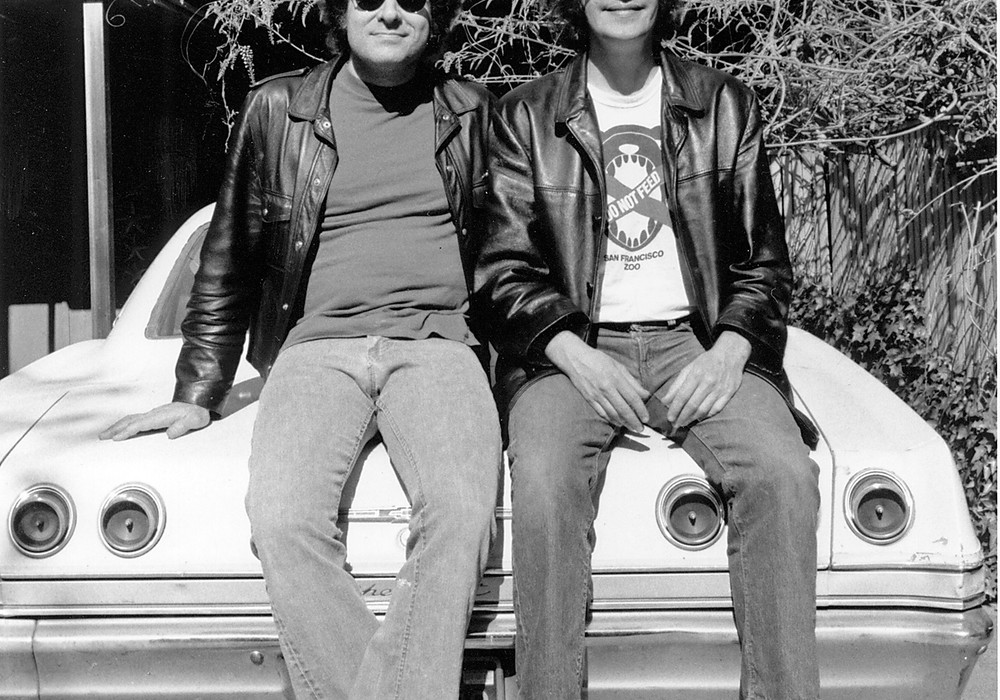Amidst the flash and glitz of the expensive, superficial hype that sells today's hits to the mainstream, it might seem as if the art of songcraft is at an all time low. Larry Levine remembers a different time. Pop music's golden age might very well have peaked by the late 1960s, with the sound of the teenage pocket-symphonies recorded by Levine and producer magnate Phil Spector. Sweating out chart-topping hits by the dozen, the two created a body of work that will be preserved in a state of timeless austerity forever in the annals of American music history. Gold Star Studios in Hollywood was the launch pad for much of this work. Mr. Levine spoke to Tape Op about the history of Gold Star and the sessions he worked on there with Spector, reminding us that in the end it's what you are recording, not what you're recording on, that really counts.
What got you your start, when this profession was still relatively young?
Well I got out of the Army in 1952, and I went to work for North American Aviation. My cousin was a partner in the studio, Gold Star, and I had known his partner from school days. So I used to hang out there at night because it was a glamorous place to be, although there wasn't much happening at that point — strictly a demos studio.
Is that Stan Ross you're talking about?
Yeah, Stan's my cousin, and Dave Gold is a friend from many years prior. They couldn't afford to hire anyone — they had their wives working as secretaries. After a few months, business was picking up a little bit and they really needed somebody. So we worked out a way where through my GI bill, I could do on the job training, and I could get the money from the government, whatever they could afford to pay me, it was like $30 a week then. It was enough to manage, since I wasn't married or anything... that was the beginning of it.
So were you learning hands-on during demo sessions, on-the-fly? Or was there any experimenting happening at night?
Everything was hands-on. Of course in those days, it was just at the end cycle of recording directly to disc. You know, where you count them down with your fingers, and mouth the numbers and then point at 'em to start playing. So I did some of that.
That was to acetate right? Acetate engraving?
Acetate, yeah. It was generally just a small piano and voice combo, or perhaps with a drum or bass, but nothing of any consequence. Actually, we were doing demos there up until about, oh I guess the middle '50s. The first hit that came out of Gold Star, which Stan did, I believe if I'm not mistaken was [The Champs'] "Tequila". And the first hit record I made there was a little later, with Eddie Cochran.
And that was when the Teddy Bears came in for their first demos right?
Well that was a lot later.
Where did Gold Star stand amongst the other studios in Los Angeles then?
Well up to that point in time, they were at the bottom. Actually, Stan had been working for another studio up until 1950, which is when he and Dave created Gold Star, because his boss at Electro-Vox wouldn't give him a raise. So they started the studio, and that was all dependant on Stan going out and hitting the street and talking to people, you know about coming in and doing it.
Sounds like a pretty classic blueprint for a lot people starting their own studios, after having those types of problems working for someone else. That also really dispels a big misconception of the era. The image of an engineer with a lab-coat was just not really applicable for private recording studios — how people could just come in and start working, without any prior training.
You know, speaking of technical, I always felt that about the process of being a good engineer/mixer, I don't know maybe "engineer" got people into thinking of technical. But I always felt that my job was probably 75 or 80 percent creative, and the rest technical, rather than requiring a large background of training.
What was it about Gold Star that began to attract people?
Part of the reason Herb [Alpert] came to the studio was because of the sound he heard Phil Spector doing. He felt that the studio was going to be more to what he heard the Tijuana Brass being, than Western or United, where he recorded "The Lonely Bull". So yeah, he came there. Those are the things that Herb appreciated at Gold Star, I know that the sound was warmer than the sound at United. Even though Bill Putnam built the console.
He did Gold Star's console right? Was that custom for you guys?
Uh-huh. It was 12-inputs with rotary pots.
Would you say you were you just the house engineer with the storm going on around you in a sense?
That was more or less true, although because of the loyalty to the producer I was working with, there would be some animosity created with other producers who might not feel that way. Phil, as you know, was a very dynamic person, and a lot of people disliked him. After working with him, I grew to love him, but it took a lot of doing to get to that point, and most people didn't get there. Basically the storm was happening around me, I was never involved politically.
Could you describe Gold Star's live room? You've said you wondered how at Motown sessions, they always got the same drum sound, while you had to confront that issue at every session.
Well, in the first place, I've never visited the Motown studio, but Phil told me that they had the drums nailed down in one location, so that they would never be moved. And of course at Gold Star, the room itself was so small...basically we had a 13 or 14 foot ceiling, maybe even 12 feet, a very low ceiling, and the room itself was not big. So the drum sound was always contingent on what the other instruments were doing, 'cause I had leakage that I had to concern myself with. As far as level, a lot of people thought we were running it into saturation. One of the engineers at RCA told me, in trying to go for that sound, he figured it was saturation. And so he ran it in, and it was terrible, obviously! It wasn't saturation — it was just Gold Star. The room itself had the echo chambers in combination with that.
Everything was bleeding into each other in there?
Yeah, because we had acoustic guitars, usually three or four acoustic guitars playing, and it certainly would make a difference, what key we were playing in. If they were playing open strings then there was more level coming out of the acoustic guitars, which meant that I wouldn't have much leakage from the drums because I wouldn't have the mics open as wide. Whereas if they were playing closed strings a lot, then I had to turn up their mics. So there was always this consideration of setting everything in together. I couldn't do a drum sound ever, on its own like they do now of course, where you put a drum in total isolation.
Nothing was in a vacuum then?
Nothing was in a vacuum, everything was in the one room. We did all of the orchestra, the band together.
So were people on top of each other in there?
Well almost! But I think, and it proved pretty much true, that when you fill a room with people, you get a better sound. And if you have a few people in a larger room.
It's just like when a hall or club fills up a little bit, the sound grows softer...
Yeah, it's true. I remember when we did "This Guy's in Love with You", we did it in the room, and it's the first time Bacharach had ever been to the studio. He set it up, and you know he used a lot of strings and stuff — probably the most people we'd ever had in the room. And I put his piano, for whatever reason, at the back of the studio, so he had to climb over people to get back to his piano. And he said, "I can't believe that this is gonna work!"
Well I'm sure his fans would say that it did!
Yeah that was actually Herb's first #1 single. As I said, to have the studio that full of people helped the sound work. But as far as the drum goes, it was ever changing. That was the bane — Phil's bane. He would always wonder why he couldn't get the same drum sound every time. But he knew better, cause Phil was one of the most aware people ever as a producer, of what exactly was going on at all times. So nothing was a surprise to him.
How many of Phil's early experiments with Marshall Lieb were actually being used in all of the hit sessions?
Phil got more unconventional I think, after he went to England and came back wanting to do some things. He'd mention things to me like ADT [automatic double-track] as the newer reverb kind of thing, to double up voice sounds and things like that. But up until then, no it was pretty straightforward. It all happened in the studio.
In "Girls Can Tell", did you guys add in a steel drum? I thought I heard that in there.
I wouldn't be surprised, I don't remember, but I know we did some things with steel drums. You know whenever any musician came into the studio, Phil would put 'em to work playing percussion or piano, whatever, you know, they would end up working. Phil always had ideas for people, if he had extra people, he had extra things in mind.
What was behind the fabled "Wall of Sound"?
Well, the "Wall of Sound," I mean it's just the name of something. No one set out to create anything like that. What happened was that Phil took a new rhythm section, you know, by using three pianos, and three basses, and three, four, five acoustic guitars whatever, you know? Filling the room with all those people, and creating the sound that he had heard in his head, which somebody later dubbed the "Wall of Sound," because it was much fuller sounding than your basic drums, bass, guitar, piano, you know whatever rock was doing at that point. And it was all melded together — it was a meld, it wasn't individual. I think what helped Phil get that meld was the room. The reason we almost never got tape rolling until we were into overtime in the session was because he needed to get the guys tired enough so that they weren't playing as individuals.
Playing out of the mix more?
Right, although they weren't trying to do that earlier, it's just that they were stronger earlier. But all of that...the echo chamber and you put it all together, and it's the "Wall of Sound."
Did you guys normally work with such large groups on other sessions? Would you say sections were doubled the majority of the time?
With Phil yes, but not with other people.
Was that all done live? With doubled drums, doubled bass?
Yep everything was live. The only times we ever overdubbed instruments, well we overdubbed strings, and I remember on "Da Doo Ron Ron" that Phil wanted to hear a bass drum that wasn't included in it. I don't know if you remember the song, but the "pah-poom," it came later, we got Nino Tempo, we came in one night, and Nino was playing the bass drum on those spots. But other than that, everything was done live mono. The one thing about Phil is, as much as he heard a sound prior to recording, he always had an open mind. And if something was better, or needed whatever, he went to that. So, it wasn't like he had the sound and then everything else was blocked out to that end.
How about the compression and microphones you liked, and used a lot? Well we didn't have much in the way of compression at all, as a matter of fact we didn't have compressors on individual channels. Dave Gold built the compressor that we used in our mastering... just mastering. It was a very soft, but nice sounding thing. As far as what we had on the console, we had basic EQs on each channel. When I say basic, they were broadband EQs, and we could push at 3, 5 and 10 in kHz, we could push those, let's see, in increments of 3 dB, up to 12. In other words, we could boost at 5 kHz by 3, 6, 9, or 12 dB. Cutting there were 2 settings, we could cut at 3 or at 6kHz, and that was that. And then on low end we had 60 and 100 Hz that we could work with. But there wasn't much happening, that was more just tweaking than anything else it wasn't like the equalizers that are around now at all. No, this was just strictly tweaking, if you felt you wanted to do it.
So it was all about the mic placement really?
Pretty much.
In that room, was there more ambient mic'ing happening, close mic'ing, or both?
No, everything was as close as we could get it. Ambient, it's a killer. I mean we didn't put any ambient mics up. Ambient was there, you didn't have to mic for it. I don't necessarily think it was the close quarters, it was the sound he had heard.
What sort of mics were at Gold Star?
We were using mostly dynamic stuff, Electro-Voice and Shure.
The SM-7?
I thought it was a higher number than that. The Shure 57 is what I recall, and 58, 56. And then we were using RCA ribbons — 77s and 44s.
Were Neumanns a presence in the studio at that point?
Yeah, we had only one Neumann, a 67 that we would use judiciously for something or other. Then some Sony C-37s, but mostly it was dynamics.
How much room with the recorder did you have? Were there 4-tracks there?
It started out all we had were 2-tracks, and then as the technology grew, we went to 3-track and then 4- track, and finally 8-track. But nevertheless, the orchestra was always on one track, it was always mono, it was never stereo.
Did you ever have a safety tape machine? I know places like the old Bell studios always ran backup reels next to the master.
It a good idea, but we didn't do that! We were flyin' by the seat of our pants! I mean it was a stretch for Gold Star to ever get new equipment, so we didn't have the luxury of a bunch of machines. I remember a Scully, which was our first 4-track machine, they came in and demonstrated, brought the machine in. Before the Scully we had, our multi-track was a 3-track Ampex, and that was an adventure. That's where I almost blew the whole scene with Phil, I erased a track! The Ampex didn't have any safe mode on it, so if you hit the record button, you were gonna be recording whether you were playing back or recording, so I ended up doing that! And the Sync heads... this was the big difference between the Scully and the Ampex at that point in time. But the Ampex sync heads, when you would be playing off of the record head, had no top end to speak of — it was very dull sounding. The Scully sounded really great, so even though I used to bounce things off the 3- track, like voices, if I wanted to double voices, I would have to make sure that I had live voices going the last time around, because otherwise there was just no top end on the voices coming off the sync head. So with the advent of the Scully, you had safety and you had good sound off the sync. They were just really good running machines, we loved the Scullys.
When you would work in 3-track set up, doing the whole band live, how many tracks was that going to at once?
It would end up on one of the tracks. What would happen is, because Phil liked to hear the monitors really coming on at you, in order to get more volume I would record on two tracks at once, mono, they were both mono, and then after that was complete and we were gonna put something else on the track, I would just erase that track and put voices or whatever was gonna be on it. And then the third would be the strings or something.
How did you contain that mix bus, since he wanted to hear things so loud all the time? How did you control distortion?
Actually the control room was a spectacular one... with that sound, it was just the right size, and the monitors, you could just blast the hell out of them.
What type were they? Altecs?
Yeah... I recorded on two tracks in order to strengthen it even more for Phil. Every time somebody would come in the control room that hadn't been there, Phil would boost it up a notch to impress them. But I had to maintain what I had to maintain. As far as distortion went, I kept my meters where they needed to be. Which was the case with the whole story of "Zip-A-Dee-Doo-Da". We'd been working for three hours or so, and he asked me to turn this up, and that up, and pretty soon everything was pinning on me and I knew I wasn't gonna be able to record it that way. But I didn't have the nerve to say anything to him. But I knew what I was going to have to do, and finally I worked up the nerve, and I just dumped all the faders — they were rotary pots. And I just turned them all off. And Phil looked at me like I was crazy and he started screaming at me. I said, "I can't record it that way," so, I had to. And then I started bringing in the instruments one at a time, balancing them at a level I could record at. And just before I got the last microphone turned on, Phil says, "That's the sound, let's record it," and I said that I didn't have Billy Strange who was playing lead guitar, I didn't have his microphone on." And he says "Don't turn it on, let's just record it." And they did it in one take.
Who was the group on that one?
Bob B. Soxx & the Blue Jeans. I had said, "What's the title," and when he told me with the slate he said, "Zip-A-Dee-Doo-Dah", I thought that was a put on, and then when I realized that's what the song was gonna be, I literally fell out of the chair! Cause it was like the greatest thing you could imagine! I mean to have that — nothing like that was happening. He told me later on that he took the demo disc back to New York, and played it for one producer who put it on, and like four bars into the intro, pulled the needle off and said, "I'll give you $10,000 in advance," without ever hearing the rest of the song.
What about those B-sides? I thought it was very interesting that for Philles singles you guys would record more or less a jam for the B-side, so that no attention would be distracted from the single.
Well, after we had the track that he wanted done, 'cause we would only do one at any session. It would never be working to try to do two or three or eight tracks. I mean he worked on one song at a time. So after he got what he wanted, he'd give 'em a key and they'd just play, just jam. Then he'd give it a title, one of these ridiculous titles. They were good musicians, so when they jammed, it was musical.
You've said you worked with Phil Spector and Herb Alpert, "Two of the best" producers. What separates them in your mind from all the rest?
I think I categorize producers by putting them into three basic categories. And the hardest producers to work with were the ones who didn't know what they wanted, and couldn't communicate... because everybody in the studio could be trying different things, but you never knew what pleased them. The next easiest one was the one who didn't know what he wanted, but could communicate and was willing to listen to different things and different ideas. And the best producer of all, and that's where Herb and Phil came in, were the ones who knew what they wanted, and knew how to communicate, but still had open minds about things. So those were the easiest ones to work with.
That's a good way to break it down
Yes, it's very simple. Which kept me from ever being a producer, 'cause I knew I couldn't bring to a session what they did. And I didn't want to bring to a session what these other guys did, which I felt was far below them.
Was Brian Wilson a presence around Gold Star?
Well it wasn't a huge presence, but he did some things there.
I know he was enamoured of Phil's work.
Yeah, he was enamoured of Phil. And he did a lot of Pet Sounds and some portions of "Good Vibrations" there. But actually I was leaving Gold Star to go to A&M at that point, so he worked with Stan Ross on most of that stuff.
Was there a separate mastering room? I noticed you were credited for that on the Crystals re-releases.
Yeah, we had a separate mastering room. Basically this control room that I'm telling you about, which was the greatest listening environment that I've ever heard for that kind of music, it was not a truthful room, but it was exciting.
Too reflective?
Well it wasn't reflective to the point where you couldn't hear everything. Just what you got there was not necessarily... if you walked into the studio you didn't hear it the same way. And so when it came out into the control room, it was exciting and thrilling, and hit- sounding. But, Phil would take the tape, and he would go over to, I think it was Columbia, and he'd have them master it. And he wouldn't let them touch the tape, it had to be cut flat. So when it came back you know it didn't sound as exciting as when we were hearing it in the control room, which I knew it wouldn't. I knew it needed EQ, and we had a dubbing room/mastering room, actually a couple of them. One main room where we were cutting. And so the way we would do it would be to do some EQ on it, and then cut a test, maybe8 bars on a disc. And then play it back, and then change the EQ from what I heard playing it back, until the tests that I got sounded good, then I would cut the master. But it was never going in and just recording stuff, nothing was truthful enough.
Did you ever do any living room tests at home with those?
No, I knew what would be good when I heard it in the control room, and in the mastering room. I knew that if I heard the sound that I wanted when I listened to things I had mastered coming off the radio, then it was right. I had a really good conception of what it should sound like in our mastering room, in order to work well in general, which would help me a lot more than trying to do it in the living room!
We have a little transmitter box, which allows you to run to the car to check things out.
We did that too. After a while you get to listening, and you know where the sounds should be without having to do that. But that takes a while. But then when you get that one place where you can know, it's great.
You said Dave Gold built a mix compressor for Gold Star?
Yeah, he built it using a light source. It was optical, and it had a nice soft sound, I mean you couldn't really tell it was in. You know it would just kind of protect us, or help with things.
How about mastering EQ?
We had a rack with EQ in it. But again we had to make the tests with the EQ that we thought was right, play it back and then re-EQ it 'till we got what we wanted to hear on a test playback. I think we had Pultecs in there. I found out when we were doing the box set, how invaluable it was... it took us so long to make that because each pass just never seemed to be right. Until I discovered I needed to go back into analog, and tubes to make that musical sound again.
For the Back to Mono box? Yeah, it was all digital, but I was trying to EQ digitally
to stay in digital format, and it just never could happen! I would go through the whole process and then Phil and I would go into some other place and listen to what I had done, and it was never right. And it was like maybe the fifth or sixth pass on all of this, that I tried going back into tube amplifiers and EQ'ing there, and then the whole thing came together. It ended up digital, but the EQ happened in analog. When you're in the tubes, and you've got the sine wave going, it's just a more musical sound.
How was the shift from Gold Star in the '60s era, to A&M in the '70s?
Well when A&M hit big with the Tijuana Brass, they got this opportunity to buy the old Charlie Chaplin lot. Herb and Jerry [Moss] came to me and said, "Listen we bought the lot, what do you think about coming with us and building the studio there?" Wow, it took me maybe fifteen seconds. So I told Stan and Dave what was happening, and they said, "Great!" I mean they knew there was no way I couldn't go with that. So the transition was just that a transition. We were still recording at Gold Star for most of 1967, while we were putting the studio together there. In 1967 Gold Star was putting out a lot of hit records.
What kind of console was the center of A&M's "A" room?
Well, when we first built it, Howard Holzer built a whole bunch of consoles for us. Afterwards Howard died, and there was Neve, there was a Quad-Eight console that I had in one of the control rooms. I think Neve was probably the last one to go into the large studio, but then it changed after I left.
Was that a 24-channel board in the beginning?
At that point I think it was 16 in 1967. One of the things that I rue about that was Howard building it with fixed modules, rather than being able to insert in and take out various things, replace things as the needs changed... and I went along with that. He felt A&M was too prestigious to go with the consoles that weren't modular, but I was wrong — and so was he. I mean for flexibility yeah, it wasn't as flexible as I would have liked it.
What was one of your favorites to work on?
I don't know, it didn't seem to matter, the music was all that mattered to me. I think that's a danger of what's happening now with all of the kinds of Pro Tools and all of that. It's that there are so many variations that you make technically, that people don't just listen to the music anymore, they're trying to do things. I mean it's hard for me to believe that they care enough, with Pro Tools you know, to make a sound that emulates coming off of one tape recorder as opposed to another tape recorder. I mean what useful purpose does that serve? I mean who cares whether it came off of an Otari, or if it came off of whatever else is around. I hired an engineer at A&M who was really a heavy-weight engineer, and I came into the studio one time when he was setting up, and he's down there, putting in all his EQs in on the microphones. And I asked him, I said "How come you're putting in EQs now?" instead of waiting for them to start playing. And he says, "No, I know what I want the mics to sound like" And to me that is totally against whatever I believe. You listen to the music, and you make the music sound as good as you can. And so what's happening again, with Pro Tools is that you're not listening to the music, you're listening to what you can do... It used to be for me, the criteria, when I tried to sit down and analyze a hit record, was that a hit record had two ingredients. One was emotional, the first thing that had to hit you when you heard a record on the air, that really turned you on, was emotional. It had to move you with what you were hearing. And then there was something intellectual afterwards — if the lyric was a great lyric, and had something really great to say, and it all tied together. When you had both those elements, then you know it was a great record. But the big thing was, there had to be some emotion that got you to start with. And if people are not listening for that anymore - we used to call it the hook, I guess - and I don't know if people listen for a hook anymore. When I say listen for a hook, I know that they still write hooks, but just listening and finding out if there is a hook, or something that really gets to me when I hear it — I don't think that's happening.
Unfortunately it isn't always a first priority anymore.
Right, so that's what I miss. I can't believe how lucky I am that I worked when I did, as opposed to working now. I probably couldn't make it in the business today. The enjoyment, and the fun, and the people that I worked with there in those days, it was just beautiful. Like I say, I'm so glad it happened then.
Was A&M the label first or the studio?
A&M was Alpert and Moss. They started out in the garage, it wasn't a studio actually, they didn't record anything other than the demo for the "Lonely Bull". Then they went into United to record it. So they never had a studio, they just had offices. That was the way it was with most small labels, they would go into the rental studios that were around: Radio Recorders, United, Gold Star, Sunset Sound — a bunch of them around.
What have you been doing in audio since the '70s?
I was doing some freelance projects with Herb and with Phil. And then I went to work for a little post- production studio, doing some things that I enjoyed. It would be putting in music, recording dialog when they were shooting and then re-recording the dialog, putting music to videos. In the middle '70s and early '80s all the money came in to the groups, and so the groups would go in to record and they wouldn't necessarily have anything written down that they were gonna record. They'd go in and play around a while, and you'd end up sitting there for hours while they were deciding what it was they were gonna do or what they were gonna put on, one track at a time, much like the way they do now. So it was very boring for an engineer! At that point in time anyway, they all had money and so studio time didn't bother them. I had been used to coming in at 10 o'clock being ready to roll at 10 o'clock. So you'd have the stuff set up before, and you're working. You didn't have time to sit around and get bored!
Do you have anything at home you fool around with recording-wise?
Actually Herb Alpert just recently made a deal with Universal, where I guess they sold their publishing, and in return he got all of his tapes back. So he wants to go in and redo some horn, he's enamoured with the TJB sound again! So he wants to maybe replace some horns that he wasn't really knocked out with on some stuff. So he called me and asked me if I would be part of the project with him. I'm doing that on a "when I feel it" kind of basis. They just bought a unit, a Radar 24, which I like the sound of a lot better than Pro Tools. So we're messing around with that now.
Hey that's great! I can see it isn't easy to give it up for good! When you love the music, it's hard to ever let go.
Well yeah, but like I said the business is not the fun it was then, so I wouldn't care to get into the business at all.
Now there are so many bands, and different currents that working music doesn't have to be Top 40 in order to exist. And some of the more authentic groups today are doing it on their own, with independent labels and smaller studios.
That will always be the way, the people on the outside are the ones doing the real good things.
